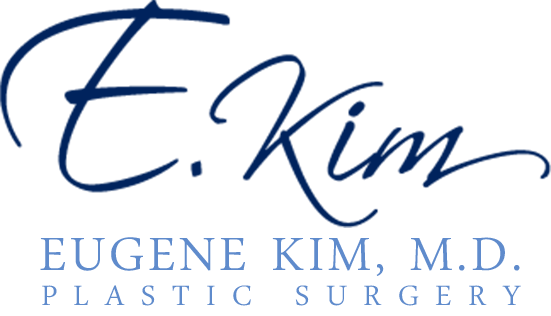 Breast augmentation is one of the most popular cosmetic procedures around the world, providing countless individuals with the results they desire. However, like any surgical procedure, it comes with its own set of potential complications. Among these, bottoming out is a concern that many may not be familiar with until they experience it firsthand. This blog post aims to shed light on what bottoming out is, how it compares to other breast implant complications, and what can be done to address it. Board certified plastic surgeon Dr. Eugene Kim provides treatment of bottomed out breast implants to patients in Beverly Hills, Los Angeles, Santa Monica, West Hollywood, CA, and surrounding communities.
Breast augmentation is one of the most popular cosmetic procedures around the world, providing countless individuals with the results they desire. However, like any surgical procedure, it comes with its own set of potential complications. Among these, bottoming out is a concern that many may not be familiar with until they experience it firsthand. This blog post aims to shed light on what bottoming out is, how it compares to other breast implant complications, and what can be done to address it. Board certified plastic surgeon Dr. Eugene Kim provides treatment of bottomed out breast implants to patients in Beverly Hills, Los Angeles, Santa Monica, West Hollywood, CA, and surrounding communities.
What is Bottoming Out in Breast Augmentation?
Bottoming out is a specific complication associated with breast augmentation, where the breast implants descend too low on the chest wall. This downward shift results in the nipples appearing unusually high on the breast mound, giving an imbalanced look. Additionally, the inframammary fold, which is the natural crease under the breast, becomes distorted or shifts lower than its original position. This condition not only impacts the visual aesthetics of the breast but can also affect the individual’s overall satisfaction with their surgical results. Bottoming out is distinct from other complications such as capsular contracture and implant rippling, and it requires different approaches for prevention and correction. Recognizing the symptoms early, such as noticing a gradual lowering of the breast implants or changes in the nipple position, can help in seeking timely intervention.
Causes and Risk Factors of Bottoming Out
Several factors contribute to the risk of bottoming out after breast augmentation. A primary cause is the over-dissection of the tissue pocket during surgery, which can lead to excessive implant movement over time. The size of the implants also plays a significant role; larger implants can place additional strain on the breast tissue, increasing the likelihood of downward displacement. Individuals with thinner breast tissue or skin are particularly susceptible, as they may not provide adequate support for the implant. Poor postoperative care, such as failing to wear supportive garments as instructed, can exacerbate the condition. Additionally, certain physical activities or trauma to the chest area during the recovery period can contribute to the risk of bottoming out. Understanding these risk factors can help in taking preventive measures and ensuring the best possible outcome from breast augmentation.
How Bottoming Out Differs from Capsular Contracture
Capsular contracture and bottoming out are both complications associated with breast augmentation but manifest in distinct ways. Capsular contracture occurs when the body forms a thick, fibrous capsule around the breast implant, causing the breast to feel firm or hard. This condition can result in the implant being squeezed into an unnatural shape, leading to discomfort or pain. In severe cases, the implant can appear distorted or become asymmetrical.
Bottoming out, however, involves the breast implant shifting downward on the chest wall. This displacement causes the nipples to sit higher on the breast mound and distorts the natural crease under the breast. Unlike capsular contracture, which affects the firmness and shape of the implant due to internal scarring, bottoming out impacts the position of the implant and the overall aesthetic balance of the breasts.
Treatment approaches for these conditions differ as well. Capsular contracture may require procedures such as capsulectomy, where the scar tissue is removed, or capsulotomy, where the scar tissue is incised to relieve tightness. For bottoming out, surgical revision often involves repositioning the implant and reinforcing the implant pocket to prevent future displacement.
Understanding these differences helps in identifying the specific issue one might be facing and seeking the appropriate corrective measures.
Comparing Bottoming Out to Implant Rippling
Implant rippling and bottoming out are both issues that can affect the visual results of breast augmentation, but they have different underlying causes and manifestations. Implant rippling occurs when the edges of the breast implant create visible waves or folds in the skin. This is more common in individuals with minimal natural breast tissue, as the lack of tissue coverage makes the implant edges more noticeable. Textured implants and saline-filled implants are also more prone to rippling compared to smooth or silicone-filled implants.
On the other hand, bottoming out is characterized by the downward displacement of the breast implant, causing the nipples to appear higher on the breast mound and the natural inframammary fold to become distorted. This is often due to factors such as over-dissection of the tissue pocket during surgery, larger implant sizes, or inadequate support from thin breast tissue.
The corrective approaches for these complications also differ. Implant rippling can sometimes be addressed by changing the type of implant or adding more natural tissue or fat grafting to improve coverage and reduce the visibility of ripples. In contrast, correcting bottoming out typically involves surgical revision to reposition the implant and reinforce the breast pocket, often using internal sutures or mesh for added support.
Understanding these distinctions is essential for identifying the specific issue and seeking the appropriate treatment. By recognizing the unique characteristics of implant rippling and bottoming out, patients can better communicate their concerns with their surgeon and explore suitable corrective options.
Prevention Strategies for Bottoming Out
Prevention strategies for bottoming out in breast augmentation focus on both preoperative planning and postoperative care. One of the first steps is to select a skilled plastic surgeon with extensive experience in breast augmentation procedures. A seasoned surgeon will use precise techniques to create an adequately sized implant pocket, minimizing the risk of over-dissection and subsequent implant displacement.
Choosing the right implant size is also critical. Implants that are too large for the individual’s body frame can exert additional pressure on the breast tissue, heightening the risk of bottoming out. During the consultation, your surgeon can guide you in selecting an implant that aligns with your aesthetic goals while ensuring optimal tissue support.
Material choices for the implant also play a role in prevention. Silicone implants are generally favored over saline ones for their cohesive gel that tends to mimic natural breast tissue better, reducing the likelihood of downward movement.
Postoperative care is equally vital. Wearing a supportive bra as recommended by your surgeon can provide necessary support to the newly augmented breasts, aiding in proper healing and stabilization of the implants. Avoiding strenuous physical activities and following your surgeon’s advice on limitations during the recovery phase can also help prevent undue stress on the breast tissue and implant pocket.
Moreover, patients with thinner breast tissue may benefit from additional preventive measures, such as internal sutures or the use of mesh, to reinforce the implant pocket. This added support can significantly reduce the risk of downward displacement, ensuring a more stable and aesthetically pleasing result.
Being aware of and actively participating in these preventive strategies can greatly enhance the likelihood of a successful breast augmentation outcome.
Treatment Options for Bottoming Out
When bottoming out occurs, several effective treatment options can address the issue. One common approach is surgical revision, where the surgeon repositions the implant to its intended location. To prevent future displacement, the surgeon may use internal sutures or mesh to reinforce the breast pocket. In certain cases, it may be beneficial to downsize the implant or switch to a different type, such as a more cohesive silicone gel implant, which provides better structural support.
Another technique involves correcting the inframammary fold, restoring it to its original position for a more natural look. This may be done concurrently with other adjustments during the revision surgery. Additionally, for patients with thin breast tissue, adding tissue support through fat grafting can help improve the overall aesthetic outcome and provide additional padding for the implant.
The decision on the best treatment plan should be made in close consultation with a board-certified plastic surgeon, who will consider factors like the patient’s anatomy, the extent of the bottoming out, and previous surgical history. The surgeon will also provide guidance on what to expect during the recovery process and how to ensure the best possible results. By addressing the issue with a tailored treatment plan, patients can achieve a more balanced and aesthetically pleasing appearance.
Understanding the Recovery Process Post-Treatment
Recovery from surgical correction of bottoming out requires careful adherence to your surgeon’s postoperative instructions to ensure optimal healing and prevent recurrence. Initially, you may experience swelling and discomfort, which can be managed with prescribed medications. Wearing a supportive garment is essential to maintain the position of the implants and promote proper healing. It’s crucial to avoid strenuous activities and heavy lifting during the recovery period to minimize stress on the surgical site.
Regular follow-up appointments with your surgeon are important to monitor your progress and address any concerns promptly. Your surgeon may recommend specific exercises or massages to aid in the healing process and prevent complications. The timeline for recovery can vary based on individual factors and the extent of the correction, but most patients can expect to resume normal activities within a few weeks.
Maintaining a healthy lifestyle, including proper nutrition and hydration, can support the healing process. If you notice any unusual symptoms or have concerns during recovery, it’s important to contact your surgeon immediately. By following these guidelines and being attentive to your body’s signals, you can achieve a more stable and aesthetically pleasing outcome from your breast augmentation revision.
Contact the Office of Beverly Hills Plastic Surgeon Dr. Eugene Kim
Click here see more plastic surgery procedures and treatments performed by Board Certified Plastic Surgeon, Dr. Eugene Kim on patients in Beverly Hills, Los Angeles, West Hollywood, Santa Monica, CA and surrounding areas or call 310-271-6996 to schedule a consultation.
